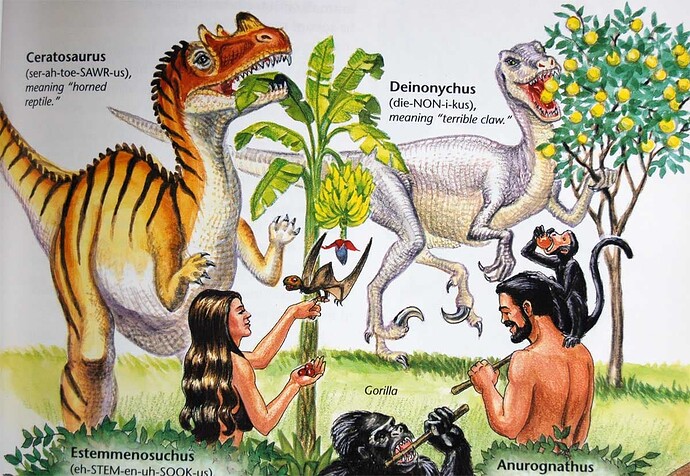TLDR: It is commonly held by Young Earth Creationists that there was no animal death prior to sin entering the world. However, I believe that this position cannot be maintained when examining the body plans of certain insects/spiders. And that Answers in Genesis attempt to explain this away by claiming that insects “are not even alive in the biblical sense”, is a tacit addition of this fact. Discuss.
For the purposes of opening up the conversation to YEC brothers and sisters, I’ll be assuming that Adam and Eve were real people and that the fall was a historic event.
Warning, here be triggers
I will concede that an argument could be made that insects did not prey on other animals, or have a death-dependent life cycle, before the fall by being selective in the examples that one uses. For example, perhaps God intended blow flies to feed on decomposing fruit rather than decomposing flesh or that all ant species were herbivorous.
However, when moving from general sets to specific examples, I believe that the evidence from sense observation indicates that insects and other arthropods like arachnids, etc. are specialised to predate other animals - either by divine intention, or evolution, or both.
I think the clearest examples of this include the venom fang position in centipedes, the larvae of Dytiscidae, a large family of diving beetle, and spiders; the binocular vision and raptorial jaws of damselfly and dragonfly larvae; and the body plan of the praying mantis. This list is not exhaustive!
However, the clearest example in my mind is a little-known group of arachnids known as the amblypygids.
Source
These creatures don’t actually hide out in your nightmares or the pits of hell, but rather under logs, bark, and caves across tropical and subtropical regions. Functionally, blind they move around and locate their prey through too long, modified legs that are covered with sensory hairs.
When examined more closely, the pedipalps (those spiny ‘arms’) of the amblypygid are covered in spins and folded into a raptorial design similar to the jaw of the dragonfly larvae or a praying manti’s front legs. When hunting these pedipalps extend rapidly, grasping prey and dragging it towards the creature, then hold the prey item for in place whilst it is eat… slowly… whilst still alive.
I believe that the is no way that anyone rational person can look at a creature like this and maintain that it was not ‘designed’ (by divine will, natural selection, or both) for the purposes of catching and killing other creatures.
More to the point, I think YEC organisations like AiG know this too, which is why they must deploy rescuing devices such as this footnote to handwave insect predation away:
It is not clear from Scripture whether insects receive the designation nephesh that people and most animals receive in Genesis. The Hebrew word nephesh basically means “a breathing creature,” but Leviticus 17:11 states that “the life [nephesh] is in the blood,” so it is possible that nephesh life must have blood. Scripture never uses “blood” in reference to invertebrates, and in an everyday sense, invertebrates don’t actually have blood. It might be implied from this that insects may have died before the Fall. However, this is unlikely as God only gave “every green herb for food” to all animals, including “everything that creeps on the earth, in which there is life” (Genesis 1:29–30). So it would appear that nothing ate insects in the pre-Fall world.
Setting aside whether Nephesh even means ‘breathing creature’ and what the insects/spider ate before the fall. To go to such extraordinary scriptural backflips to claim that one of the largest groups of complex organisms in the world are not actually alive, to my mind indicates an attempt to plaster over a gaping hole in the AiG worldview.
But enough from me, if you made it this far, let me know what you think.
- What other examples of creatures clearly intended to hunt and kill come to mind?
If you are a YEC I’d love to hear your thoughts on the example(s) presented above.
- How do you reconcile the hunting adaptations of insects and arachnids with the belief that there was no death before the fall?
- What do you make of AiG’s claim that insects (and presumably arachnids) are not alive?




